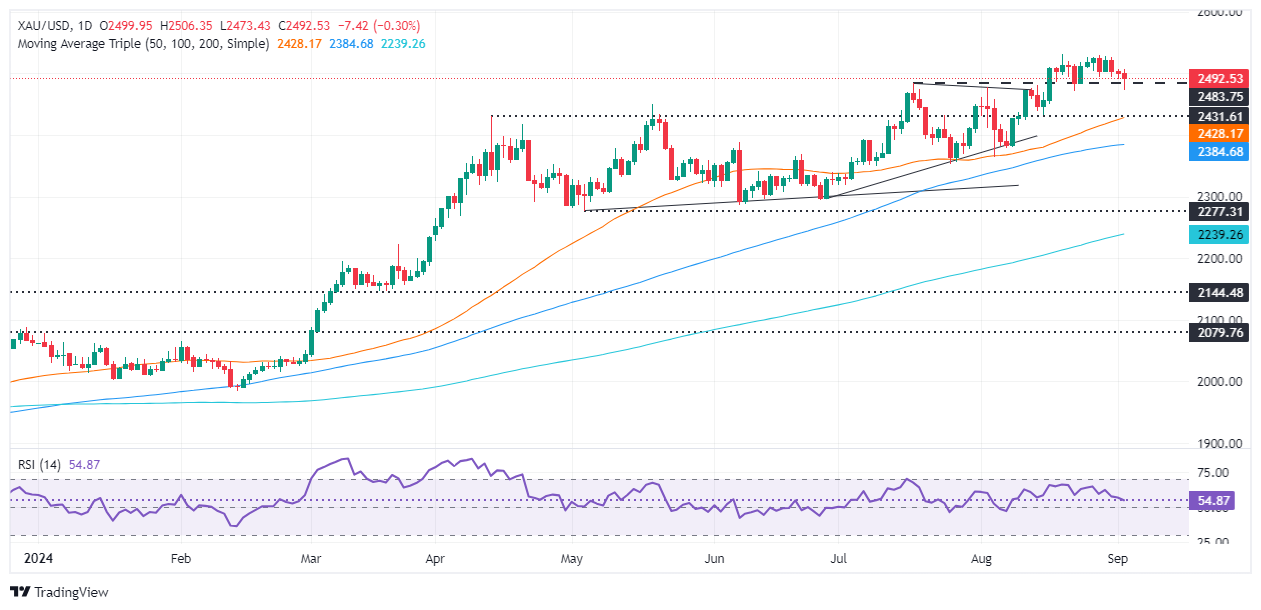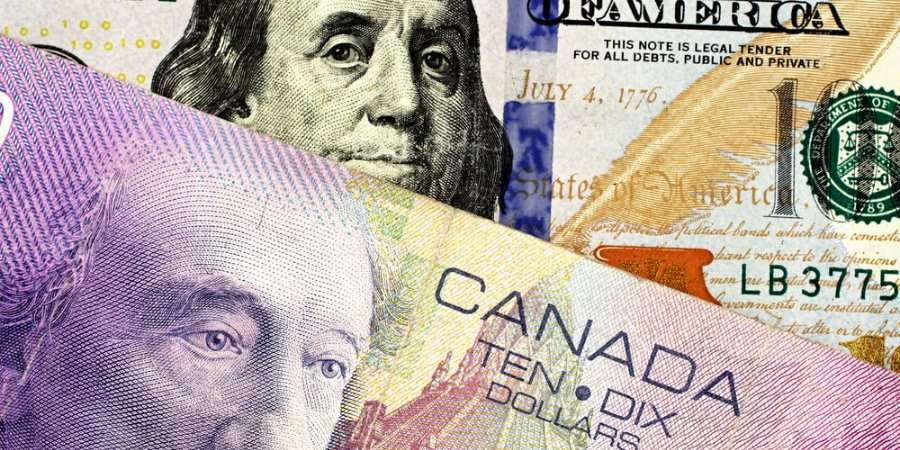Gold prices fall despite ongoing deceleration on US business activity

- Gold prices fall despite stronger US Dollar amid economic slowdown signs.
- US ISM Manufacturing PMI remains in contraction; employment sub-component improvement offers market some relief.
- Despite a drop in 10-year Treasury yields to 3.84%, Gold only briefly recovers after dipping to $2,473.
Gold prices fell during the North American session as traders returned to their desks following the Labor Day holiday. Data from the United States (US) hinted that business activity contracted, though traders bought the Greenback. The XAU/USD trades at $2,490, down 0.34%.
Earlier, the Institute for Supply Management (ISM) revealed the August Manufacturing PMI, remained below the 50-line contraction/expansion level, an indication of an economic slowdown. Despite this, an Employment sub-component of the report improved slightly.
This is a relief for Federal Reserve (Fed) officials, who have remained worried about labor market weakness. Fed Chair Jerome Powell said in a speech in Jackson Hole that employment risks are tilted to the upside.
Bullion prices ignored the fall in US Treasury bond yields yet recovered some ground after hitting a low of $2,473. The US 10-year Treasury note yields 3.84%, dropping eight basis points after the ISM’s report.
According to the CME FedWatch Tool, markets are pricing in a 65% chance of the Fed cutting its rate by 25 bps at the upcoming September meeting. This will be a headwind for the Greenback and a tailwind for the non-yielding metal, which is expected to rise moderately, as 35% of the traders had positioned for a 50 bps cut.
"If the US jobs report is significantly weaker, speculation about a US recession and faster rate cuts will resurface, further supporting Gold," analysts at Commerzbank noted.
The US economic docket will be busy this week with the release of JOLTS job openings, the ADP National Employment Change, and the Nonfarm Payrolls (NFP) figures.
Daily digest market movers: Gold price traders await busy US economic calendar
- ISM Manufacturing PMI for August improved from 46.8 to 47.2, below estimates of 47.5.
- July’s JOLTS job openings are expected at 8.10 million, down from 8.184 million in June.
- Private hiring, revealed by the ADP National Employment Change report, is foreseen increasing from 122K in July to 150K in August.
- August’s NFP figures are expected to rise from 114K to 163K, while the Unemployment Rate could dip, according to the consensus, from 4.3% to 4.2%.
- December 2024 Chicago Board of Trade (CBOT) fed funds future rates contract hints that investors are eyeing 98 basis points of Fed easing this year.
Technical outlook: Gold price set to dive further below $2,500
Gold price is upwardly biased, even though momentum shifted in sellers’ favor and opened the door for a drop to $2,470. The Relative Strength Index (RSI) hints that buyers are in charge, but in the near term the yellow metal could weaken.
In that event, if XAU/USD drops below $2,500, the next support would be the August 22 low at $2,470. Once surpassed, the next stop would be the confluence of the August 15 swing low and the 50-day Simple Moving Average (SMA) near the $2,427-$2,431 area.
Conversely, if XAU/USD stays above $2,500, the next resistance would be the all-time high, and the following resistance would be the $2,550 mark.

Fed FAQs
Monetary policy in the US is shaped by the Federal Reserve (Fed). The Fed has two mandates: to achieve price stability and foster full employment. Its primary tool to achieve these goals is by adjusting interest rates. When prices are rising too quickly and inflation is above the Fed’s 2% target, it raises interest rates, increasing borrowing costs throughout the economy. This results in a stronger US Dollar (USD) as it makes the US a more attractive place for international investors to park their money. When inflation falls below 2% or the Unemployment Rate is too high, the Fed may lower interest rates to encourage borrowing, which weighs on the Greenback.
The Federal Reserve (Fed) holds eight policy meetings a year, where the Federal Open Market Committee (FOMC) assesses economic conditions and makes monetary policy decisions. The FOMC is attended by twelve Fed officials – the seven members of the Board of Governors, the president of the Federal Reserve Bank of New York, and four of the remaining eleven regional Reserve Bank presidents, who serve one-year terms on a rotating basis.
In extreme situations, the Federal Reserve may resort to a policy named Quantitative Easing (QE). QE is the process by which the Fed substantially increases the flow of credit in a stuck financial system. It is a non-standard policy measure used during crises or when inflation is extremely low. It was the Fed’s weapon of choice during the Great Financial Crisis in 2008. It involves the Fed printing more Dollars and using them to buy high grade bonds from financial institutions. QE usually weakens the US Dollar.
Quantitative tightening (QT) is the reverse process of QE, whereby the Federal Reserve stops buying bonds from financial institutions and does not reinvest the principal from the bonds it holds maturing, to purchase new bonds. It is usually positive for the value of the US Dollar.






.jpg)
.jpg)
